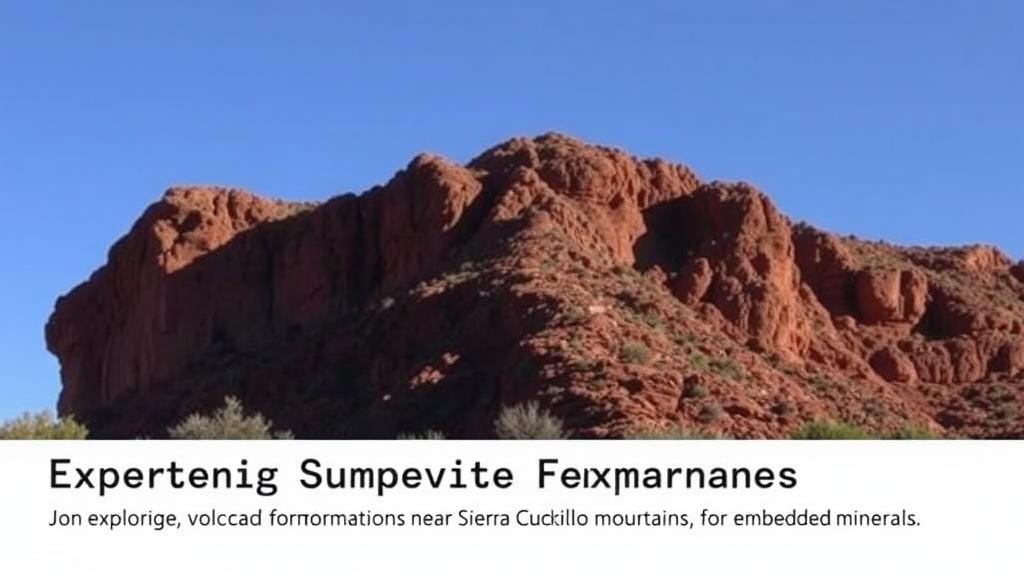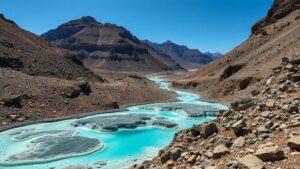Exploring volcanic breccia formations near the Sierra Cuchillo Mountains for embedded mineral treasures.
Exploring Volcanic Breccia Formations Near the Sierra Cuchillo Mountains for Embedded Mineral Treasures
The Sierra Cuchillo Mountains, located in New Mexico, present an exceptional opportunity for rockhounds and mineral collectors eager to explore volcanic breccia formations rich with embedded mineral treasures. This article delves into the geology of the area, the types of minerals one can expect to find, and practical tips for maximizing your collecting experience.
Understanding Volcanic Breccia
Volcanic breccia is a type of volcanic rock that consists of angular fragments of various sizes embedded in a finer-grained matrix. This formation results from explosive volcanic activity, which shatters pre-existing rock into small pieces. Breccia can be indicative of ancient volcanic processes, often revealing the dynamic history of the region.
The Sierra Cuchillo Mountains showcase an array of these formations, which are not only geologically intriguing but also potentially rich in mineral deposits. Geologists believe that the age of the volcanic rocks in this area dates back to the late Miocene to early Pliocene epochs, roughly 5 to 12 million years ago.
Mineral Treasures in the Breccia
For collectors, the allure of volcanic breccia lies in the potential for uncovering various sought-after minerals, including:
- Quartz: Commonly associated with volcanic activity, quartz can appear in a range of colors including clear, smoky, and amethyst.
- Calcite: Often forming into spectacular crystal clusters, calcite is a popular find with distinctive cleavage.
- Opal: While not always guaranteed, opal can sometimes be found within breccia, exhibiting stunning iridescence.
- Zeolites: These minerals can form in volcanic environments, often displaying unique crystal formations.
- Pumice: A volcanic rock that can host other minerals within its cellular structure.
Data from local geological surveys indicate that the Sierra Cuchillo area has shown positive mineralogical diversity, with an emphasis on silica content, hinting at the potential for quartz and related minerals. Surveys report a quartz saturation level of approximately 20-30% in some breccia samples.
Practical Tips for Collecting
Equipped with the right knowledge, collectors can optimize their outings to the Sierra Cuchillo Mountains. Here are some practical tips to keep in mind:
- Research Local Regulations: Before heading out, make sure to check local guidelines concerning collecting practices on public lands to avoid penalties.
- Bring Proper Tools: A rock hammer, chisel, safety goggles, and sturdy gloves are essential for safely extracting specimens.
- Timing Matters: Spring and fall are ideal seasons for collecting, as cooler temperatures make for more comfortable excursions and reduce the risk of heat exhaustion.
- Look for Clues: Pay attention to erosional features and discoloration in the rock, which can indicate mineral-rich areas.
Real-World Applications: The Importance of Collecting
Collecting minerals from volcanic breccia is not only a fulfilling hobby but also contributes to scientific research and education. The data gathered can assist geologists in understanding volcanic history and processes, as well as helping to identify natural resources.
Also, mineral collecting fosters a greater appreciation of geological diversity and the Earth’s history. It can even spark interest in geology among young enthusiasts, potentially guiding future careers in science and environmental stewardship.
Actionable Takeaways
As you prepare for your adventure to the Sierra Cuchillo Mountains, remember the following actionable takeaways:
- Prepare adequately by researching the area and complying with collecting regulations.
- Equip yourself with the necessary tools for safe and effective collecting.
- Pay attention to geological indicators that signal promising mineral deposits.
- Engage with local geological societies or clubs for community support and potential guided tours.
With these considerations in mind, your quest for mineral treasures in the Sierra Cuchillo Mountains will be both enriching and enjoyable. Embark on your exploration with curiosity and respect for nature, and uncover the hidden gems within these fascinating volcanic formations.


